 In every inscribed quadrilateral the product of the diagonals is equal to the sum of the products of the opposite sides. In every inscribed quadrilateral the product of the diagonals is equal to the sum of the products of the opposite sides.  Exercise Manuals - Page 60by George Albert Wentworth - 1889Full view Exercise Manuals - Page 60by George Albert Wentworth - 1889Full view - About this book
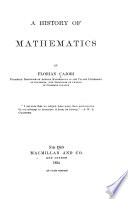 | Florian Cajori - Mathematics - 1893 - 478 pages
...circle — a limitation which he omits to state. Among these is the proposition of Ptolemaeus, that the product of the diagonals is equal to the sum of the products of the opposite sides. The Hindoos were familiar with the calculation of the areas of circles and their segments, of the length... | |
 | American Mathematical Society - Mathematics - 1928 - 876 pages
...table of "chords" he establishes the theorem on the inscribed quadrilateral, that the product of its diagonals is equal to the sum of the products of the opposite sides. A simple and elegant geometric construction (Ptolemy I, p. 27), which yields simultaneously the sides... | |
 | United States. War Department - 1895 - 1000 pages
...middle points of the diagonals; in every quadrilateral inscribed in a circle the product of the two diagonals is equal to the sum of the products of the opposite sides; in every quadrilateral inscribed in a circle the two diagonals are to each other as the sum of the... | |
 | United States. Military Information Division. War Department - 1896 - 194 pages
...middle points of the diagonals; in every quad ri hit eral inscribed in a circle the product of the two diagonals is equal to the sum of the products of the opposite sides; in overy quadrilateral inscribed in a circle the two diagonals are to each other as the sum of the... | |
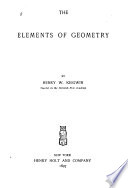 | Henry W. Keigwin - Geometry - 1897 - 254 pages
...331 to obtain Then o, be a + b + c)(a + b - o). Using 2s = a + b + c, we get -» ™ / i~ 10. In an inscribed quadrilateral, the product of the diagonals...to the sum of the products of the opposite sides. (See Fig. 141.) Construct </ ECS = Z DC A. Draw EB. As ADC and FBC are similar ; .'. a: BF = x : c,... | |
 | University of Pennsylvania - Hyperspace - 1897 - 49 pages
...BA' • In exactly the same way, we find _ '. СИ+ ЪВВ'. CA-cCA. CB'' Now, remembering that in an inscribed quadrilateral the product of the diagonals...to the sum of the products of the opposite sides, we may write b.BB'=a.AB'+e. CB', and с . CC'=a . AC'+ b . BC'. Making these substitutions, we have... | |
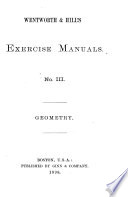 | George Albert Wentworth - 1898 - 264 pages
...of the circles in A, B, C, the other in D, 'E, F, respectively. Prove that the triangles ABC, DEF aK similar. 16. In every triangle the product of two...the quadrilateral. In AC take a point E such that /. EDC= /. ADB. A ADB and CDEare similar; also, the &BCD , and ADE. From these triangles obtain equations... | |
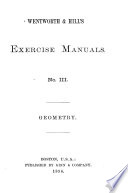 | George Albert Wentworth - 1898 - 266 pages
...product of the diameter of the circumscribed circle and the altitude upon the third side. If AC, -BCare taken as the two sides, draw the diameter CE, and...opposite sides. Let ABCD be the quadrilateral. In .4(7 take a point -Esuch that /. EDC= Z ADB. A ADB and CDE are similar; also, the A BCD and ADE. From... | |
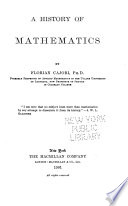 | Florian Cajori - Mathematics - 1898 - 512 pages
...circle — a limitation which he omits to state. Among these is the proposition of Ptolemaeus, that the product of the diagonals is equal to the sum of the products of the opposite sides. The Hindoos were familiar with the calculation of the areas of circles and their segments', of the... | |
 | Charles Austin Hobbs - Geometry, Plane - 1899 - 266 pages
...median divides the opposite side into segments one of which is twice as long as the other. 503. In an inscribed quadrilateral, the product of the diagonals...to the sum of the products of the opposite sides. 504. The sum of the squares of the diagonals of a trapezoid is equal to the sum of the squares of the... | |
| |